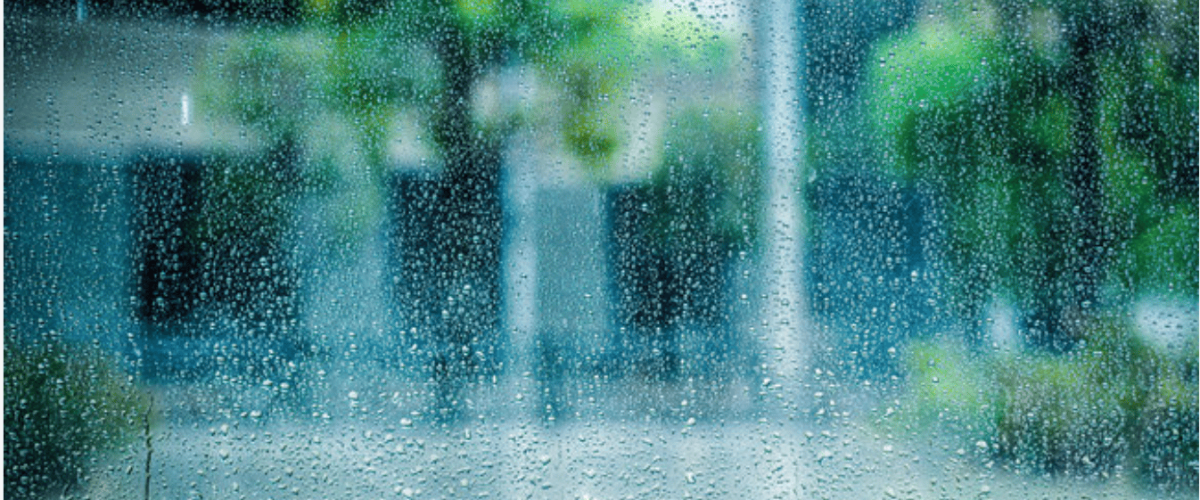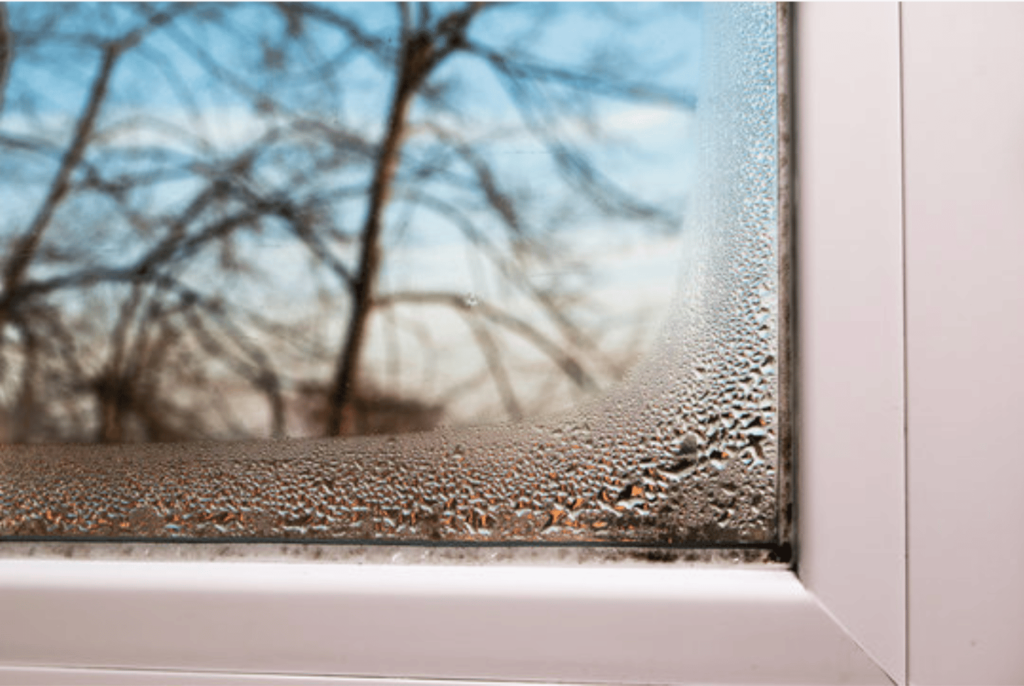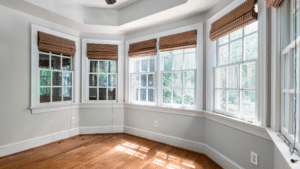As the weather grows colder, foggy windows can become a problem in some homes. This simple phenomenon happens when an object is cooler than the air around it, causing a thin layer of water molecules to form on the surface. The windows in our homes are among the most common spots where this condensation occurs because windowpanes receive direct contact with the cold air outside and are usually the coldest surfaces in the interior of a house. While this may sound harmless, the condensation that forms causes water droplets to run down windows and walls, which can result in mold and mildew.
When water forms on an impervious material surface, such as glass, the droplets have nowhere to go. The water sits there, waiting to be wiped away, and continues to drip down to other areas until it finds a porous surface to absorb it. This can be particularly problematic in the winter since the water can freeze and cause windows to crack.
If you see condensation on your windows and wonder if what you’re seeing is cause for alarm, the answer depends on where the water is accumulating.
Condensation on the Outside of Windows
If you just purchased a brand-new set of windows, the appearance of condensation can be concerning. However, when condensation is on the exterior of your windows, it is a sign that your windows are properly functioning.
When the air outside is humid and slightly warmer than the glass surface of your windows, it can result in exterior condensation. This is a good sign and means your windows are not allowing any heat transfer. So, if you see fog on the outside of your windows, rest assured that your windows are keeping your home well-insulated.
It’s always a good idea to regularly check your windowsills and frames. If you notice gaps between the window and frame, you might find areas in your home where condensation is forming. Check to ensure there isn’t any drafty air around your windows. Otherwise, moisture can form inside of your walls and cause water damage.
The Problem with Condensation on the Inside
Condensation on the interior of your windows can form because of steam during a hot shower or even from stove pots when you’re cooking dinner. But if you’re noticing foggy windows with no clear cause, it might be an indication that you have excess humidity levels in your home or perhaps poor ventilation.
Excess moisture can also be an issue for your family’s health as water vapor that is not being properly ventilated can cause your living space to become a breeding ground for mold and mildew. This can be a serious problem for people with allergies and asthma.
As water condenses on windows, furniture, walls, and carpets, the moisture can also cause your wood to mold and rot or even create rust on metal surfaces. Gradually, these issues can cause your home’s structure to deteriorate and even weaken the insulation inside your walls.
Condensation Between Your Windowpanes
Condensation between your windowpanes is a more serious concern that often requires a complete window replacement to resolve. It’s an indication that the once air-tight seal keeping the insulating gas contained is no longer air-tight. This leakage can allow water vapor to accumulate between the windowpanes, which can not only damage your windows but significantly decrease energy efficiency as well.
Window replacement is a top home improvement project for instant energy cost savings and improved home comfort. If you see condensation between your windowpanes, it’s time to schedule a window replacement. Be sure to look for products that offer a lifetime warranty on energy-efficient windows. SoftLite’s lifetime warranty shows that we stand behind our windows and the people who buy them.
How to Prevent Window Condensation
There are several steps that you can take to keep condensation from forming on the inside of the windows in your home:
- Use a dehumidifier: A dehumidifier can be particularly helpful during the winter months when condensation may be especially heavy.
- Use your fans: Any time you take a hot shower or cook on the stovetop, use a fan to minimize condensation and prevent the spread of steam.
- Keep doors cracked: If you’re in a room with steamy air, crack your front or back doors to help release some of the moisture.
- Turn up your heat: Raising the temperature inside can help reduce the chances that condensation will form on the inside of your panes.
- Install double-pane windows: Older homes usually have single-pane windows that do a poor job insulating your home. Consider switching to double- or triple-pane windows that feature superior insulating qualities. Contact a SoftLite dealer near you for help with how to determine the best windows for your home.
SoftLite offers a variety of glass packages that feature double-or triple-paned glass or Argon or Krypton gas fill for a variety of windows, ensuring a homeowner can prevent condensation before it happens. These packages feature industry-leading performance ratings, including condensation resistance and air infiltration ratings, designed to provide energy efficiency and condensation resistance.
Condensation-Resistant Windows
This winter, invest in comfort, security, and lower energy bills. Our windows hold ENERGY STAR® certifications, Gold Label Certifications from the American Architectural Manufacturers Association (AAMA), and strong Nation Fenestration Rating Council (NFRC) ratings. We’re proud to continue our tradition of excellence year after year and strive to provide the highest quality windows and doors on the market. For more information on how to prepare your home this winter, head to our blog, or find a SoftLite dealer in your area today.


 Single Hung
Single Hung
 Double Hung
Double Hung
 Casement
Casement
 Picture/Shapes
Picture/Shapes
 Sliding
Sliding
 Awning & Hopper
Awning & Hopper
 Bay & Bow
Bay & Bow
 Sliding Patio Doors
Sliding Patio Doors
 Entry Doors
Entry Doors



